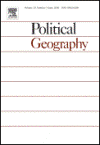Why do larger countries have more armed conflict? This paper surveys three sets of hypotheses put forward in the conflict literature regarding the relationship between the size and location of population groups. These hypotheses are based on population mass and concentrations, distances, and some residual state-level characteristics. The hypotheses are tested with a new dataset – ACLED (Armed Conflict Location and Events Dataset) – that disaggregates internal conflicts into individual events. The analysis covers 14 countries in Central Africa. The conflict event data are juxtaposed with geographically disaggregated data on populations, distance to capitals, borders, and road networks. The paper develops a statistical method to analyze these types of data. The analysis shows that the risk of conflict events increases with local population size, and is particularly large in highly populous locations within a country. We find only a moderate difference in conflict-proneness between areas located close to or far from a country's capital, except when combined with population concentration: Conflict events cluster particularly strongly in larger population concentrations that are distant from the capital, such as the Eastern provinces of the Democratic Republic of Congo.
Raleigh, Clionadh & Håvard Hegre (2009) Population Size, Concentration, and Civil War: A Geographically Disaggregated Analysis, Political Geography 28 (4): 224–238.








